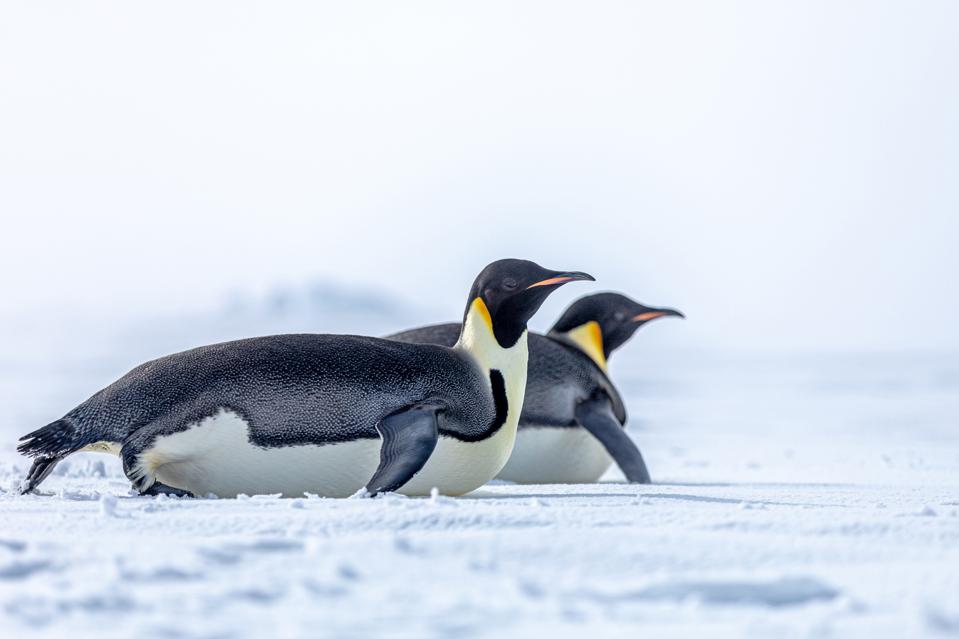Scenic Eclipse is a discovery yacht, making it a unique way to see the white continent. The ship takes a maximum of 200 guests to Antarctica, and the guest-to-staff ratio is 200 passengers to 192 crew.
The luxury line is fully inclusive of transfers, tips, meals, drinks, butler service and educational programs. The helicopter, submarine and spa services are additional. Each room is a suite and has either a private veranda or terrace. The ten dining experiences—an impressive array for a vessel this size—means guests won’t be dining on the standard cruise fare.
Here, is what you need to know about this vessel.
The Scenic Eclipse is one of only a few Antarctic vessels to carry a submarine. The submarine—the Scenic Neptune—can carry up to six passengers per dive. The sub can go as far down as 1,000 feet and is a unique way to see the active sea life on the
white continent. The Scenic Neptune’s windows—the acrylic spheres—are constructed in such a way that they almost seem to disappear, giving travelers the feeling that they are right next to the wildlife, without a barrier. The submarine is climate controlled, has a surround-sound audio system, ample legroom and headroom (so tall people feel comfortable), and the custom chairs are mounted on a swiveling platform allowing for a 280-degree view.
The Scenic Eclipse also has a helicopter, which can take up to six travelers, and it affords expansive views over glaciers.
Fresh Ingredients Every Day
So the challenge for cruise ships, especially those in Antarctica, is being able to provide fresh ingredients while sailing on a longer itinerary. (Some of Scenic’s itineraries are more than 20 days.) The innovative Urban Cultivator provides a constant supply of fresh herbs and micro vegetables to the ship’s kitchens. How does it work? The Urban Cultivator provides a self-contained growing environment—lights imitate the sun’s rays and an irrigation system delivers water and nutrients from the reservoir to the plants. That means that fresh herbs and greens can grow throughout the year, resulting in fresh produce while at sea. Also, the Urban Cultivator is reducing plastic waste since the ship does not buy packaged microgreens, which are packed in two to three layers of plastic. Plus, one of the main benefits is the taste—fresh peppercress, basil, wheatgrass, broccoli cress, pea shoots, spicy radish and coriander mean salads and entrées are full of flavor.
Whiskey Bar at Sea
If whiskey is your thing, you’re in luck—the Scenic Eclipse has 110 varieties to choose from. (It’s part of the all-inclusive pricing, so sample as many as you’d like.) The floor-to-ceiling display includes single-malts such as a 25-year-old Glendullan, a 30-year-old Jura The Loch and a 16-year-old Lagavulin. There are a variety of blended whiskies as well, including Ireland’s Jameson Select Reserve Black Barrel, Canada’s Crown Royal Deluxe and whiskeys from around the world including Australia, Japan, Taiwan, France, India, U.S.A., South Africa and Sweden.
Intimate Wildlife Encounters
Since Scenic Eclipse is small and maneuverable, it’s able to dock in areas where wildlife is abundant. And, of course, seeing animals is one of the main reasons to go to Antarctica. Picking an itinerary that includes the Falkland Islands and South Georgia (in addition to Antarctica) is the best way to maximize wildlife viewing. Travelers may see a variety of penguins including Adélie, emperor, chinstrap, king, rockhopper, gentoo and macaroni. Colonies of hundreds may greet visitors. Plus, a variety of seals including leopard, crabeater, Weddell, and southern elephant varieties can be seen throughout this region.
Whales are also everywhere, and travelers might see killer whales, humpbacks, fins, and blue whales. On the remote and sparsely populated Falkland Islands the chance to be among hundreds of emperor penguins might be a highlight of the trip. Don’t be surprised if South Georgia is your favorite destination. It’s one of the most remote places on the planet and compares to the Galapagos in terms of wildlife diversity. Mountains, glaciers, craggy coastlines and millions of seals, whales, penguins and seabirds are present here.

